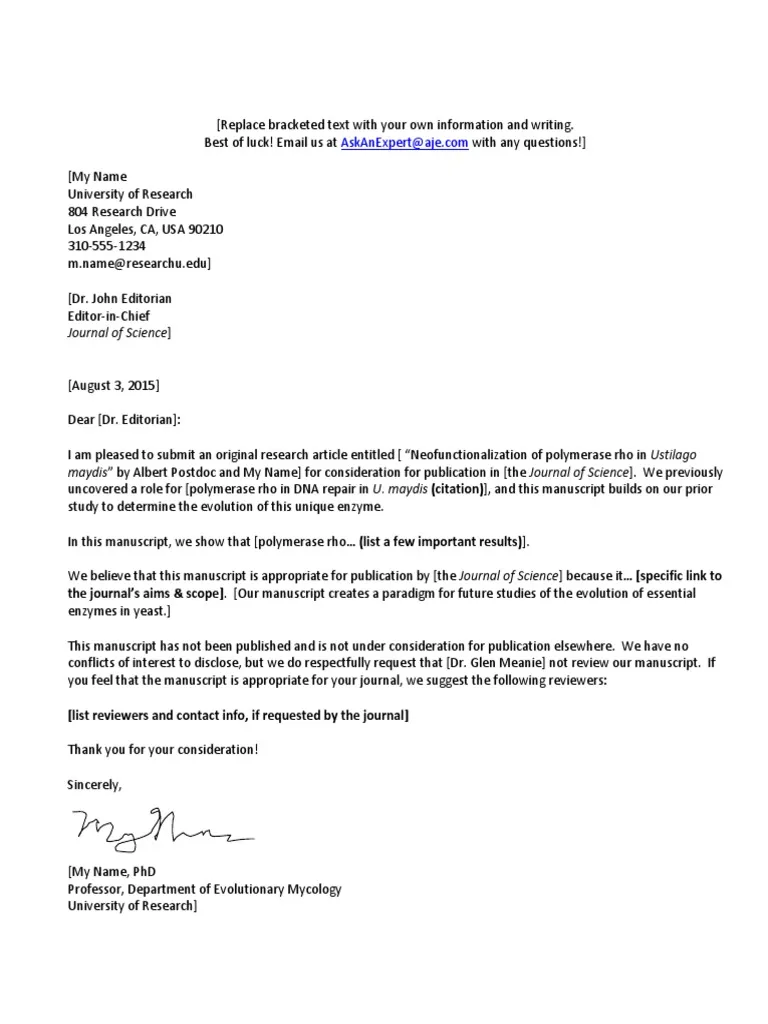What is a Journal Cover Letter?
A journal cover letter is a crucial document that accompanies your manuscript when you submit it to a scientific journal for publication. It’s a formal letter addressed to the editor, serving as your introduction and a concise summary of your research. Think of it as your first opportunity to make a positive impression and persuade the editor that your work is a valuable contribution to the field and deserves their attention. The cover letter is not just a formality; it is an essential piece of the submission process. It offers context and significance that might be missing from the abstract and provides you with an opportunity to present your work in a way that makes it stand out.
The Purpose of a Cover Letter
The primary purpose of a journal cover letter is to briefly introduce your research, highlight its key findings, and explain its significance. It’s also used to confirm that the manuscript adheres to the journal’s guidelines and to suggest potential reviewers. The cover letter acts as a bridge between the author and the editor, offering a personalized touch that helps establish a positive first impression. This document has the goal of convincing the editor to consider your manuscript for publication. It allows authors to present their research in a more engaging and persuasive manner than is often possible within the confines of an abstract.
Why is it Important?

A well-crafted cover letter is important because it significantly increases the likelihood of your manuscript being considered for publication. It demonstrates your professionalism, attention to detail, and understanding of the journal’s scope and audience. A compelling cover letter can make the difference between your manuscript being sent for review and being rejected outright. It provides the editor with a quick overview of your work, enabling them to make a preliminary assessment of its suitability for the journal. Furthermore, it can help expedite the review process by suggesting appropriate reviewers and confirming compliance with the journal’s requirements. Ignoring the cover letter is like neglecting the first impression, it’s a vital part of the publication process.
Key Elements of a Powerful Cover Letter
A powerful cover letter incorporates several key elements to effectively communicate the value of your research and persuade the editor. These components work in unison to create a compelling and professional presentation. From basic contact information to highlighting the novelty of your work, each element plays a critical role. To increase your chances of success, a detailed and thoughtful approach is key. Understanding these elements and crafting each section meticulously significantly improves the likelihood of your manuscript being seriously considered for publication in a prestigious journal.
Author Information and Contact Details
Begin with your contact information (full name, affiliation, address, email, and phone number). Also include the date. This ensures the editor can easily reach you. Make sure this information is accurate and up to date. This section serves as a basic introduction, enabling the editor to quickly identify and contact the corresponding author for any queries. Presenting this information clearly and concisely sets a professional tone from the beginning of your cover letter. Clarity in this section reflects your attention to detail and professionalism.
Manuscript Details
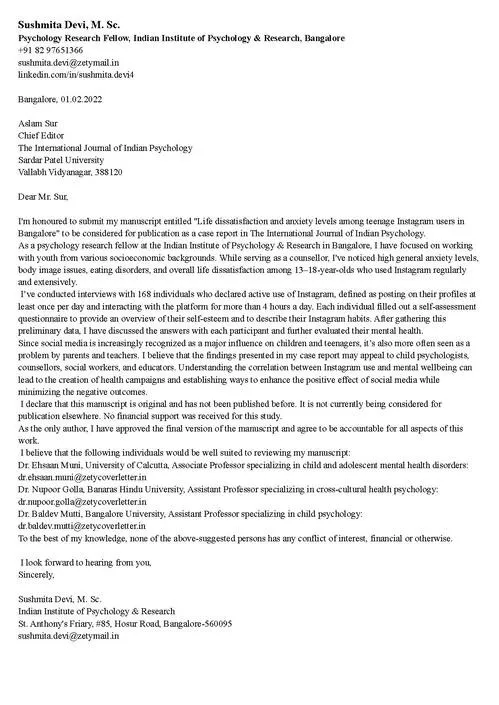
Clearly state the title of your manuscript and the type of manuscript (e.g., original research article, review article, case report). Specify the journal to which you are submitting. Mention the manuscript’s word count and the number of figures and tables included. Ensure the title matches the manuscript precisely. This section provides the editor with essential information about the submission. Precision in this section helps the editor manage the submission effectively, ensuring the manuscript is properly categorized and tracked through the review process. Incorrect or missing details can lead to delays or misunderstandings.
Research Summary and Significance
Provide a concise summary of your research, including the main objectives, methods, key findings, and conclusions. Emphasize the significance of your work. Clearly articulate why your research is important and what it contributes to the field. This section needs to capture the editor’s attention. Highlight the novelty of your work, focusing on its unique aspects and how it advances existing knowledge. Explain the practical implications or potential impact of your findings. Convincing the editor of your research’s importance is crucial for a successful submission.
Highlighting Novelty and Contribution
Explicitly state what is new or unique about your research. Explain how your findings expand current knowledge or provide new insights. Clearly demonstrate your study’s contribution to the existing body of work in your field. Compare and contrast your research with previous studies, highlighting the gaps that your work fills. If your research offers a novel approach, methodology, or solution, make sure to emphasize it. Ensure the language is accessible and easily understandable for readers with diverse backgrounds. This section should clearly explain the value of your contribution.
Mentioning Target Journal Suitability

Explain why the journal is the appropriate venue for your manuscript. Briefly mention the journal’s scope, audience, and any specific aims that align with your research. Demonstrate that you have read the journal’s aims and scope and that your work fits within its focus. Include any specific reasons why you believe the journal’s readership will be interested in your research. Showing a clear understanding of the journal’s focus shows that you’ve put thought into the submission. This highlights your awareness of the publication’s goals.
Addressing the Editors
Address the editor formally, using their name if known (e.g., Dear Dr. Smith). Express your interest in publishing in their journal. Maintain a respectful and professional tone throughout the letter. Avoid overly casual language. This demonstrates your respect for the editor and the journal. Always double-check the spelling of the editor’s name. Addressing the editor correctly establishes a professional tone from the start and underscores your respect for their position.
Keywords and Suggested Reviewers
Include a list of keywords that accurately represent your research. Suggest potential reviewers who are experts in your field and who have no conflicts of interest. Provide their names, affiliations, and contact information if the journal requests it. Selecting appropriate keywords increases the visibility of your manuscript in databases. Suggesting reviewers who are experts enhances the likelihood of a thorough and fair review. By including these, you actively assist the editor in managing the review process. However, make sure to review journal’s policy regarding suggested reviewers and conflicts of interest before including this section.
Formatting and Style Guide Adherence
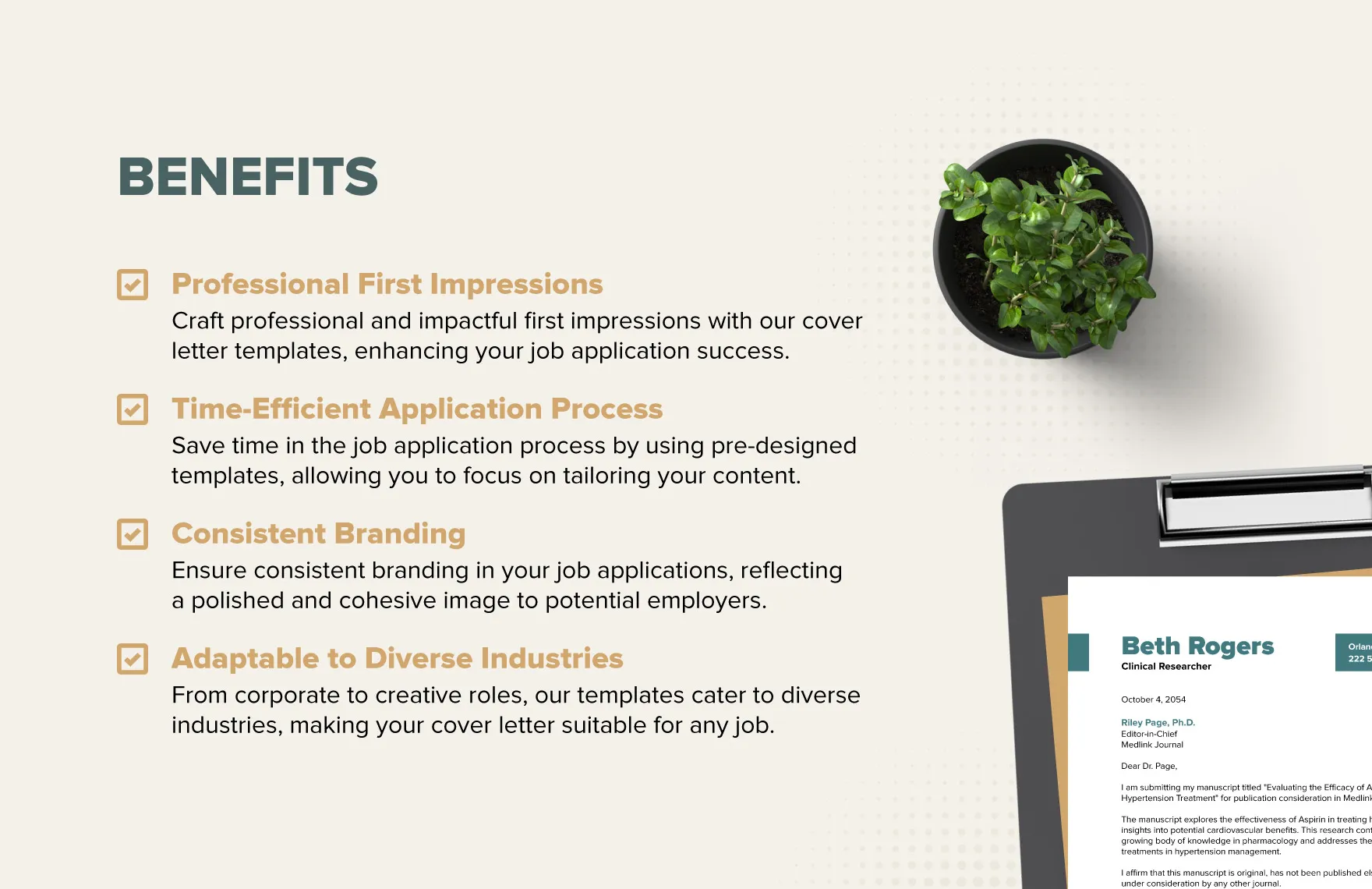
Adhering to the journal’s formatting and style guidelines is crucial for ensuring your manuscript is properly considered. This section focuses on the specific requirements related to formatting and presenting your cover letter in a professional and compliant way.
Proper Formatting Guidelines
Carefully review the journal’s guidelines for cover letter formatting. Pay close attention to the required font, margins, and spacing. Use a clear and readable font (e.g., Times New Roman, Arial) in a standard size (e.g., 12-point). Ensure your letter is well-structured, with clear paragraphs and headings where appropriate. Avoid using complex formatting or unusual designs that might distract from your content. Following these guidelines shows your respect for the journal’s process. Proper formatting makes the cover letter easy to read and review. Improper formatting can cause unnecessary delays.
Proofreading and Editing
Proofread your cover letter meticulously for any grammatical errors, typos, or inconsistencies. Check your writing for clarity and conciseness. Use a spell checker and grammar checker, but don’t rely on them alone. It’s highly recommended to have a colleague or a professional editor review your cover letter. A well-written cover letter reflects your professionalism and attention to detail. A polished cover letter can significantly enhance your chances of having your manuscript accepted for review. Addressing mistakes reduces the chances of rejection.
Common Mistakes to Avoid
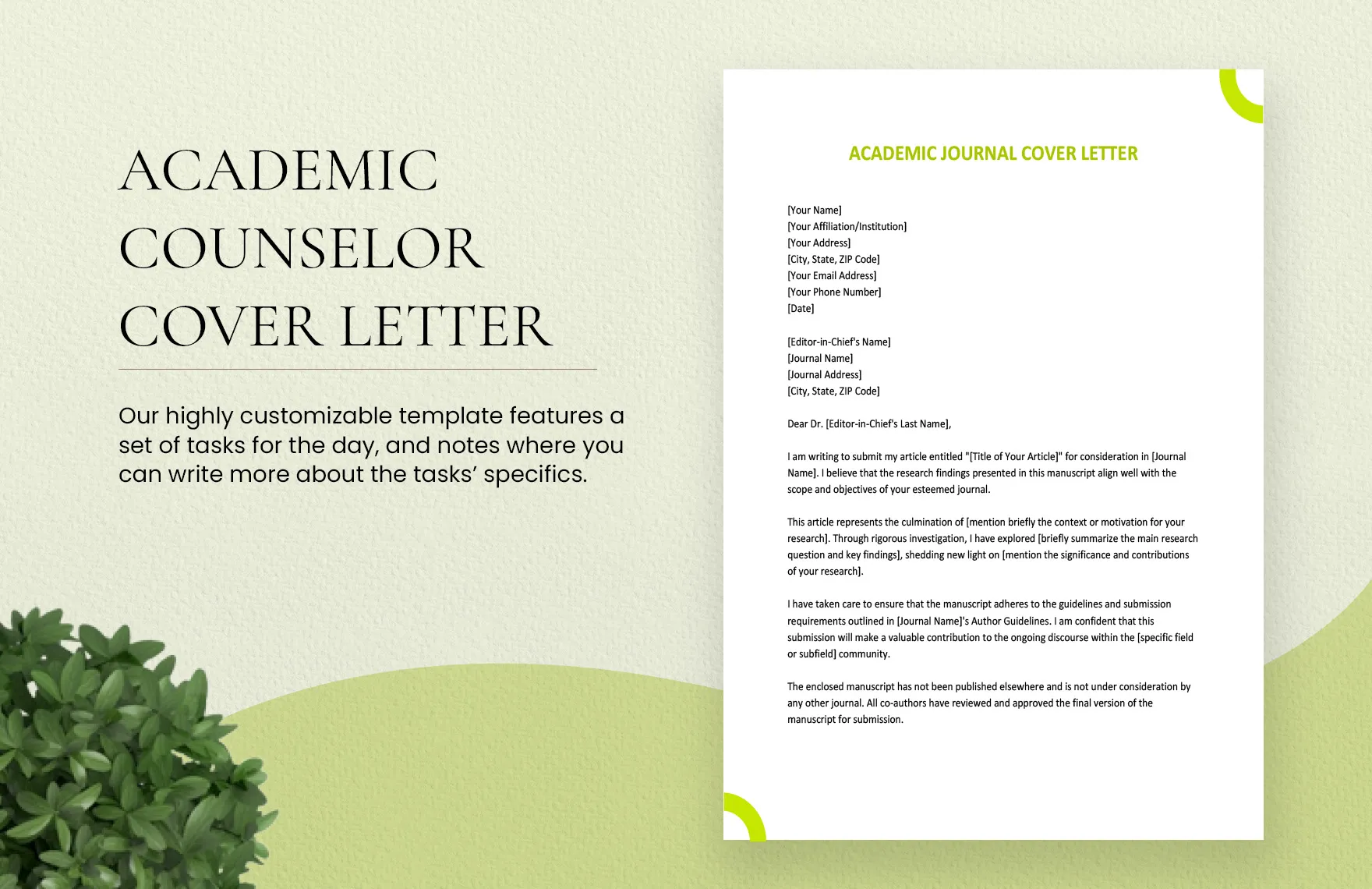
Avoiding common mistakes can greatly improve the effectiveness of your cover letter. This section highlights the frequent errors authors should be aware of to avoid potential rejection.
Grammatical Errors and Typos
Carelessly written cover letters, filled with grammatical errors and typos, can create a negative impression on the editor. Always proofread your cover letter carefully. Use spell-check and grammar-check tools, but also read it manually. Seek feedback from others to ensure a polished and professional appearance. Grammatical errors and typos detract from your credibility. This demonstrates that you are careless and inattentive to detail, which may lead to the rejection of your manuscript.
Lack of Clarity and Conciseness
Write in a clear, concise, and easy-to-understand style. Avoid jargon or overly complex sentence structures. Get straight to the point and avoid unnecessary details. A lack of clarity can confuse the editor and make it difficult to understand the significance of your research. A clear and concise cover letter is easier to read. Clear and straightforward writing also makes the letter more compelling and persuasive. Ensure your writing is focused and presents information efficiently. Use clear and precise language and avoid ambiguous terms.
Ignoring Journal Guidelines
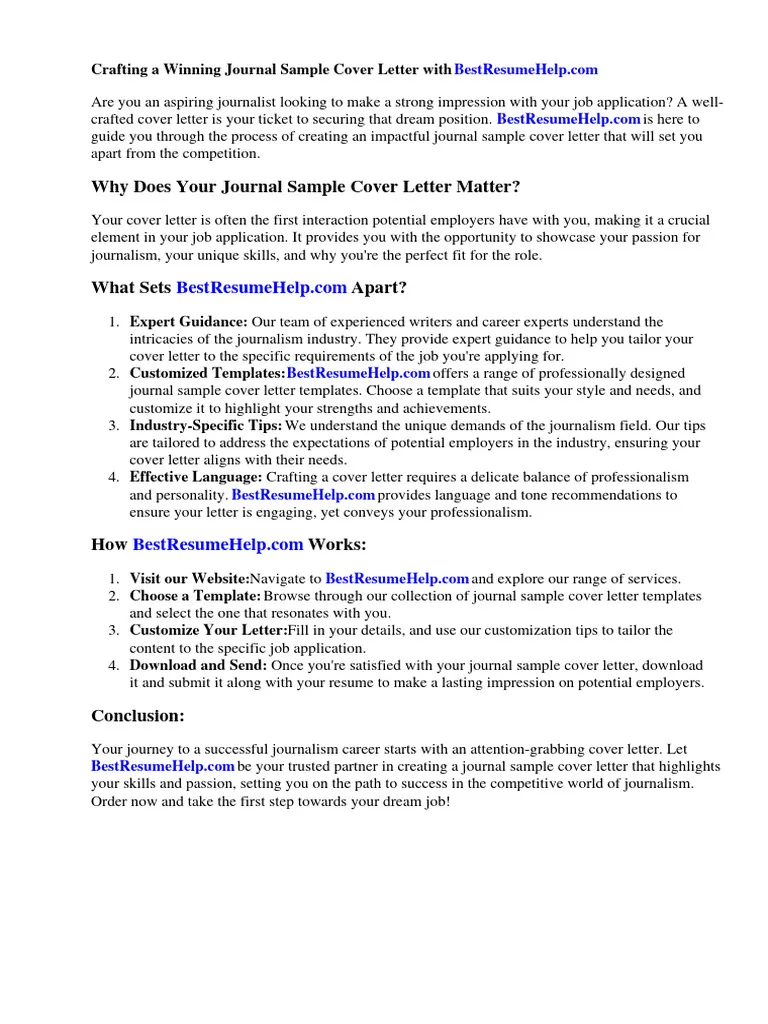
Failing to follow the journal’s guidelines is a critical mistake that can lead to immediate rejection. Always review the journal’s specific instructions for authors, including formatting, word count, and required content. A cover letter that does not meet the journal’s requirements sends a message that you are not attentive to detail. Ensure your letter includes all the necessary information and follows the specified formatting rules. This demonstrates that you value their instructions. Ignoring these is a clear sign of lack of respect.
Tips for a Winning Cover Letter
To maximize your chances of a successful journal submission, consider these key strategies to elevate your cover letter and make it stand out. By carefully incorporating these tips, you can increase the likelihood of having your manuscript accepted for review and ultimately published.
Tailoring to the Specific Journal
Customize your cover letter for each journal to which you submit. Research the journal’s aims, scope, and target audience. Highlight how your research aligns with the journal’s specific focus. Show that you have read recent publications in the journal to understand its current interests. Generic cover letters do not impress editors. Demonstrating that you’ve specifically tailored your letter is a significant advantage. This tailoring demonstrates that you respect the journal and its readers.
Emphasizing the Research’s Impact
Clearly and concisely describe the significance of your research and its potential impact. Highlight how your findings will advance knowledge. Explain any implications or practical applications of your work. Emphasizing your research’s impact can capture the editor’s attention and make your manuscript more appealing. Make your research’s potential impact clear. This demonstrates why your work matters. By explaining the broader implications, you help the editor understand why your manuscript deserves publication.
Maintaining a Professional Tone
Use a formal, professional tone throughout your cover letter. Address the editor with respect. Avoid overly casual language, slang, or jargon. Proofread carefully to ensure that your writing is clear, concise, and error-free. A professional tone sets a good first impression. It shows that you are serious about publishing your work. A professional tone conveys respect. A professional tone suggests that you take your work and the journal seriously.
Conclusion
Writing a powerful journal cover letter is an essential part of the publication process. It is an opportunity to introduce your research effectively, highlight its value, and convince the editor to consider your manuscript for publication. By following the guidelines and tips in this guide, you can significantly increase your chances of success. Remember to be clear, concise, and professional in your presentation. Adhering to these guidelines ensures that your research receives the attention it deserves, paving the way for successful publication and contributing to the body of scientific knowledge. Good luck with your submissions!
